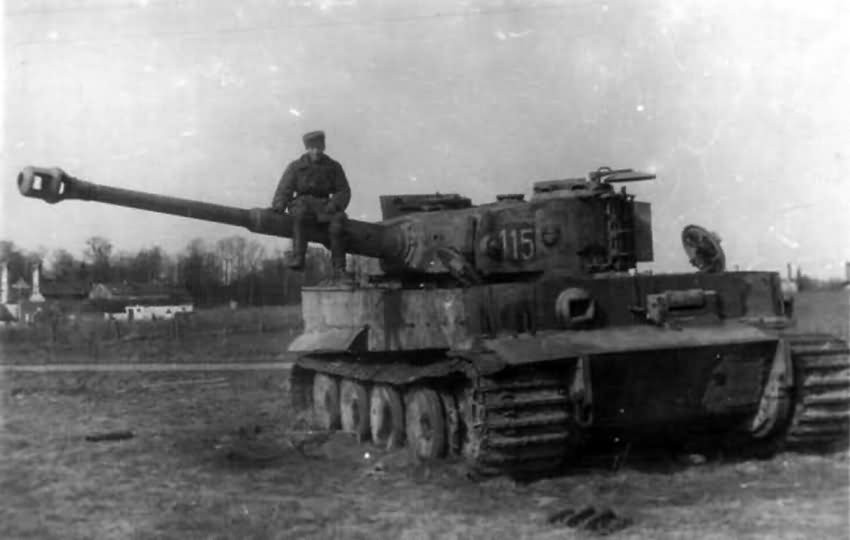Tiger I
Introduction:
During World War II, the Tiger I, also known as the Panzerkampfwagen VI Tiger Ausf. E, emerged as one of the most feared and formidable tanks on the battlefield. Designed and deployed by Germany, the Tiger I boasted exceptional firepower, robust armor, and impressive mobility. In this article, we will delve into the history, design, performance, and impact of the Tiger I, exploring why it remains an iconic symbol of German engineering and military prowess.
Development and Design:
The development of the Tiger I can be traced back to the early 1940s, when German engineers recognized the need for a heavy tank capable of engaging and destroying enemy tanks with superior firepower and armor protection. Drawing inspiration from the Soviet T-34 tank and the British Churchill tank, they set out to design a formidable war machine.
The Tiger I featured a formidable 8.8 cm KwK 36 L/56 gun, known as the "88." This high-velocity gun had excellent armor-piercing capabilities, enabling the Tiger I to engage enemy tanks at long ranges. Its sloped frontal armor, measuring up to 100 mm thick, offered substantial protection against enemy fire. The tank's overall design incorporated overlapping and interlocking armor plates, maximizing the defensive capabilities.
Performance and Mobility:
Weighing around 57 tons, the Tiger I was a heavy tank that required a powerful engine to propel it on the battlefield. It was equipped with a Maybach HL 230 P45 V12 engine, delivering 700 horsepower. This engine provided the tank with a top speed of approximately 28 miles per hour (45 kilometers per hour) on roads and a range of around 100 miles (160 kilometers). Despite its weight, the Tiger I boasted impressive maneuverability and could traverse challenging terrains.
Combat Effectiveness:
The Tiger I's combat effectiveness on the battlefield was unparalleled. Its powerful 88 mm gun could penetrate the armor of most Allied tanks at considerable ranges, giving it a significant advantage in engagements. The tank's thick armor made it difficult to penetrate, forcing Allied forces to develop specific tactics to neutralize its threat.
One notable aspect of the Tiger I was its psychological impact on the enemy. The mere presence of a Tiger I tank on the battlefield often instilled fear in opposing forces, leading to panic and disarray. Its reputation as an invincible war machine created a sense of awe and admiration among German troops and added to its combat effectiveness.
Operational Deployment:
The Tiger I made its operational debut on the Eastern Front in 1942 during the Battle of Leningrad. It proved its worth in combat, demonstrating its superiority over most Soviet tanks at the time. Subsequently, Tiger I tanks were deployed on other fronts, including North Africa and Western Europe, where they engaged Allied forces in fierce battles.
Challenges and Limitations:
Despite its remarkable capabilities, the Tiger I faced certain challenges and limitations. The tank's production was a resource-intensive process, requiring significant amounts of raw materials and skilled labor. As a result, the number of Tiger I tanks produced was relatively low compared to other German tanks.
The Tiger I also had mechanical issues, often related to its weight and complex engineering. Its operational readiness was affected by breakdowns, engine failures, and logistical challenges. Repairing and maintaining the Tiger I proved challenging due to its sophisticated design, resulting in prolonged downtime and reduced combat effectiveness.
Legacy and Influence:
The Tiger I's legacy extends far beyond its operational deployment during World War II. Its reputation as a fearsome heavy tank, coupled with its technological advancements, made it a symbol of German engineering and military might. The tank influenced subsequent tank designs and doctrines, as nations sought to develop vehicles capable of countering its capabilities.
Today, the Tiger I holds a special place in the history of armored warfare. Several surviving Tiger I tanks are preserved in museums around the world, attracting enthusiasts and historians alike. The tank's imposing presence and reputation as a formidable war machine continue to captivate those interested in military history.
Retrospect:
The Tiger I remains an iconic symbol of German engineering and military prowess during World War II. Its impressive firepower, robust armor, and psychological impact on the battlefield solidified its place among the most formidable tanks of the era. While facing certain challenges and limitations, the Tiger I played a significant role in shaping armored warfare and left an indelible mark on military history. Its legacy endures, reminding us of the technological advancements and tactical innovations that emerged during the war.
When you subscribe to the blog, we will send you an e-mail when there are new updates on the site so you wouldn't miss them.



